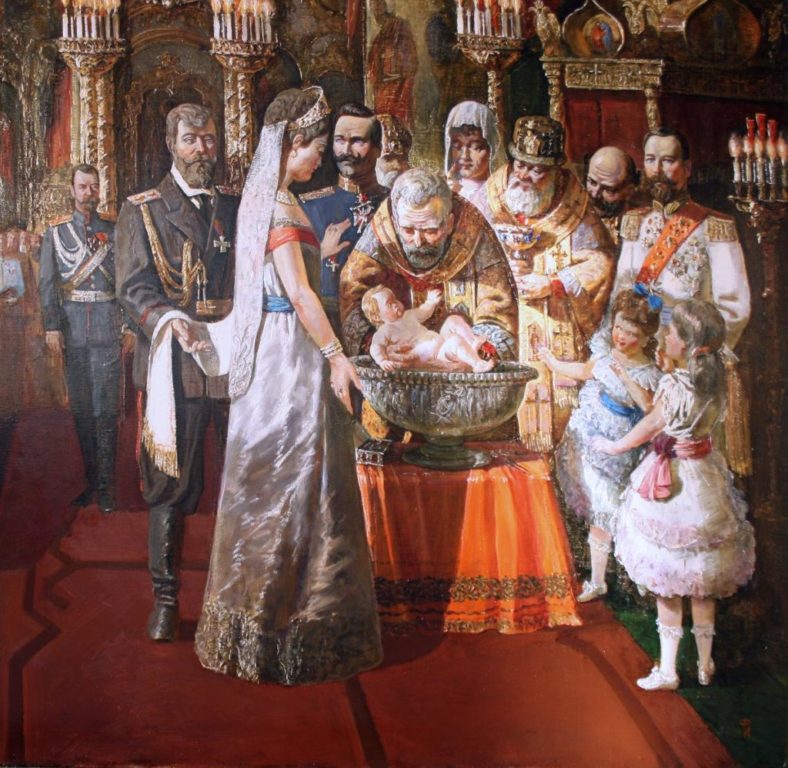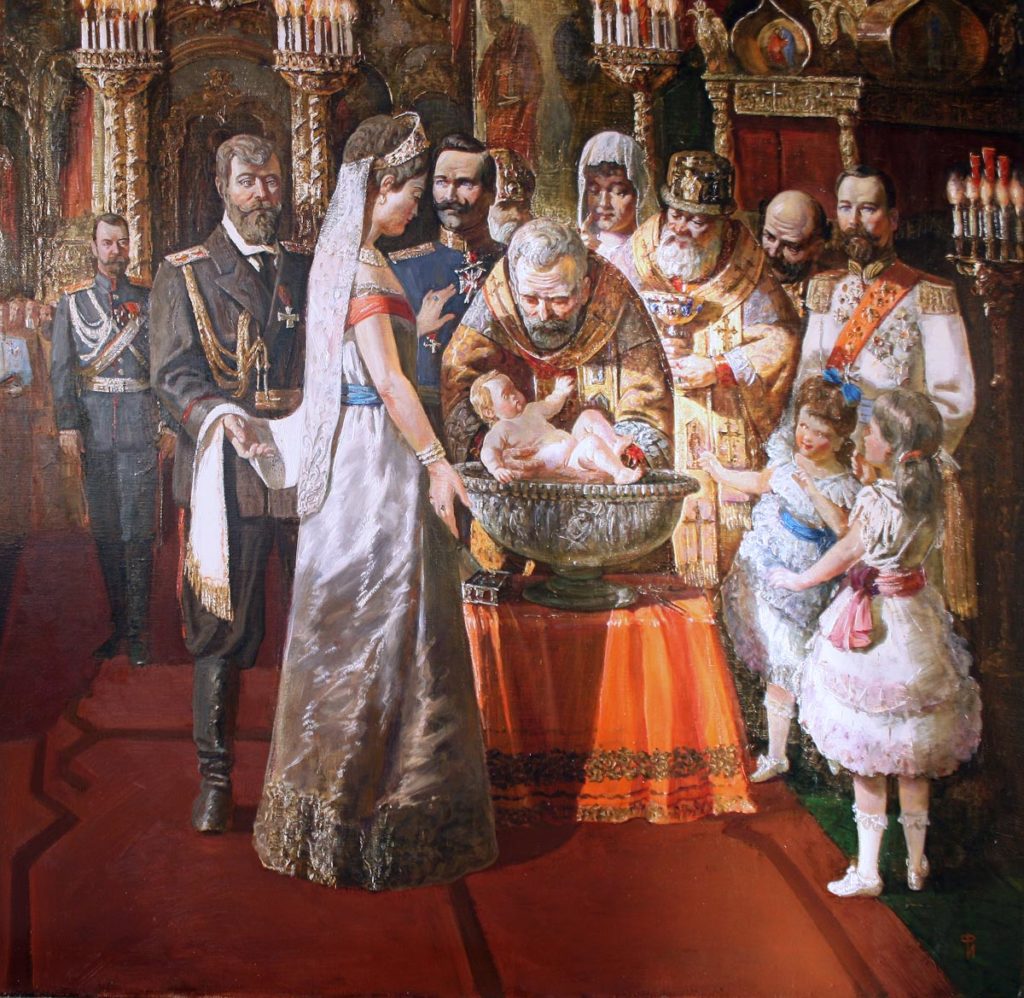Below is the detailed article about the auspicious event of the christening of Queen Elizabeth I. She was born in Greenwich Palace in London which is now the Palace of Placentia.
The King was in confusion about whether to name his child – Henry or Edward but to his surprise, he had a baby girl and decided to name her Elizabeth after his mother and the mother of his wife.
Christening of Queen Elizabeth I
Contents
Queen Elizabeth I was born on the 7th of September, 1533 and the royal baptism took place three days after her birth, which is on 10th September 1533. The Christening of Queen Elizabeth I took place in the Church of the Observant Friars located in Greenwich.
The preparations of the christening began the moment the Queen was born. Hymns and carols were sung every day before the christening took place. All the gentry of England and chief citizens were commanded to attend the royal ceremony.
During the Elizabethan era, men and women wore precious crimson robes for ceremonies and gatherings and so the hall was full of high collared long satin robes. Some were even made of velvet. The gown of Sir Stephen Peacock, one of the fellow attendants of the ceremony, was one such example of the clothing in the ceremony.
Many Lords and Knights attended the ceremony and bought wishes and gifts for the newborn princess.

All the walls and windows of the Palace were decorated and made substantially bright and colourful with lush green ornaments. The alter where the christening ceremony was to be performed was three steps higher than the ground floor. On top of it, a baby bassinette was mounted. It was covered with a canopy made of crimson satin. It also had golden fringes around it to decorate it.
The baby was brought in to the hall and all men and women moved forward with respect. The Kings and the counsel body were made to sit first after which there was a row full of Barons and Bishops.
Then came the Earls and the Earl of Essex who was holding the crimson gilt. The Marquess of Exeter held the virgin wax and the Marquess of Dorset was bearing the salt. There were a total of 21 participants in the ceremony.
The gold cellar of salt was held for the exorcism of the child. There were also big silver basins in which the holy oil pour after washing the baby’s head. There was a taper that was to be held after the baptism ceremony was completed. Four barons carried the canopy of the baby while she was marched onto the altar with four to six members of the royal blood.

Next to them was Lady Mary of Norfolk who held a crimson full of pearls and precious stones. She was the highest-ranking lady of the time. The rich canopy was presented by Lord Rochford and Lord Hussey. Then came Lord William Howard and Lord Thomas Howard the elder.
The Bishop of London presided the ceremony by holding the child and performing the sacred sacrament. The Archbishop of Canterbury was declared the Godfather of the baby princess and the Duchess of Norfolk and Marquess of Dorset both of whom were widows were declared godmothers to the baby. The priest baptized the princess in the name of the father, son and the holy spirit and named her ‘Elizabeth’. The ceremony then came to a conclusion.
The baby princess was brought out by the Chief of the army who announced ‘God of infinite goodness! May a prosperous life follow all along to the high and mighty Princess Elizabeth of England.’ Trumpets were blown, there was merry all around. The gospel was said by the archbishop.
The Bishop of Canterbury presented the princess with a standing cup of honour made of gold. Gifts were also presented to the godparents.
After the ceremony, there was a large feast in the palace. There were all kinds of foods and presented in plenty for everyone, with violins and trumpets played for entertainment.
The feast was a notable occasion for the whole of London. People came from all across England to see the beautiful ceremony. It was one of the most prestigious of the many royal celebrations. It was one that was attended by numerous royal people and parliamentarians.
The Royal Event
It was a pleasant Sunday afternoon between 3 pm and 4 pm on 7th September when the Queen gave birth to fair lady Elizabeth and everyone began preparing earnestly for the christening of baby Elizabeth. Many royals including the Major and the members of his religious order were also present during the christening that took place on Wednesday.
All the chief citizens, lords, knights, royal gentlemen, the Major and his brethren came to attend the event dressed in velvet gowns in different barges. The walls en-route t the King’s palace and the Friars Church was decorated with flowers and green rushes. The Church was also adorned with rich arras.
The tapestry in the front was made of silver and stood proudly amidst the centre. Square canopies, gold fringes, and crimson satin fabrics covered the Church in readiness of the grand occasion.
The Royal Procession
When all people assembled near the church and everything was ready, the baby was brought with great care to the Palace hall. After that, every royal person moved forward first two citizens, then the Gentlemen, followed by the Esquires, the Chaplains, the Aldermen, the Major.
Next came the Kings council, the Kings Chapel members, the Barons, the Bishops, the Earls, Earl of Essex holding the basin gilt. Next came the Marques of Exeter carrying the virgin wax, next came the Marques Dorset holding the salt and following him was the Lady Mary of Norfolk carrying the delicate crisome made of pearls and precious stones.
The old Duchess of Norfolk proudly carried the child in a glorious mantle made of purple velvet with a long ermine-lined train. On the right hand of the Duchess was the Duke of Norfolk bearing the marshal’s rod, and on the left side was the Duke of Suffolk and in front of them marched the officers of arms.
The Countess of Kent bore the long train of the baby’s mantle and in between the royal child and the Countess of Kent walked the Earl of Wilshire and Earl of Darby like they were supporting the train in the middle.
A rich canopy was borne over the child by Lord Rochford, Lord William, Lord Thomas, and Lord Hussey. After the child trailed numerous royal ladies and gentlewomen.
Back to the Palace after Christening
Then commenced the ritual of bringing in the holy wafers, confects and other items for the guests. Many delicacies were brought in plenty for everyone. Then the procession started its journey back towards the King’s palace.
Royal members and the Lords and their ladies held the gifts given by the Archbishop of Canterbury and the gift given by the Lady of Norfolk. Almost five hundred staff members and other servants of the King held the torches. Baby Elizabeth was surrounded by torches that were borne by the royal gentlemen.
The royal clan proceeded to the Queen’s chamber door along with the baby Princess and departed. Then the Major entered the King’s chamber along with his brethren Aldermen. Later, the King thanked al the assembled Dukes, the Major and other royal gentlemen and sent them away after they held a party to mark the royal occasion and later went to their respective barges.

